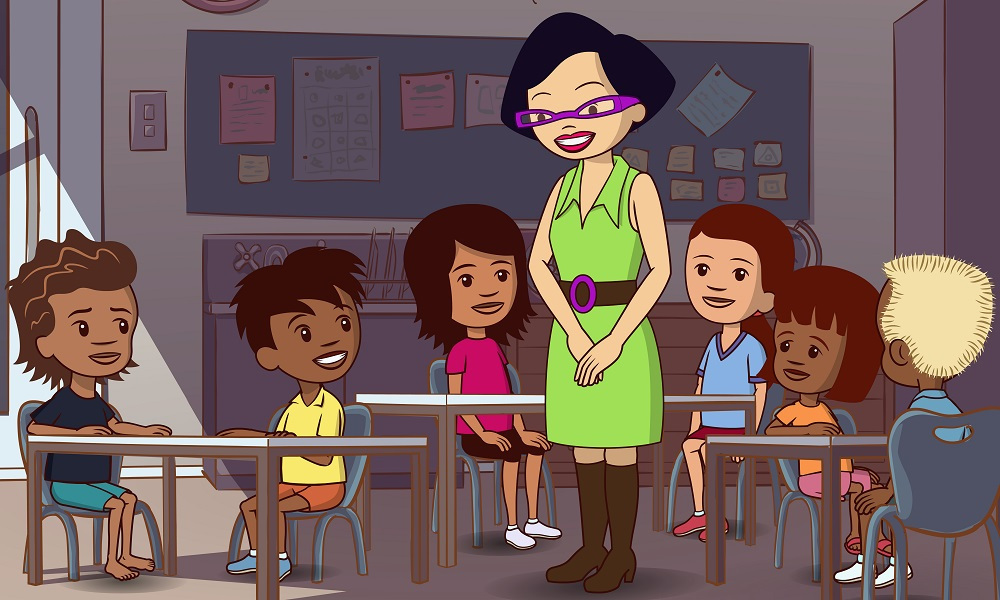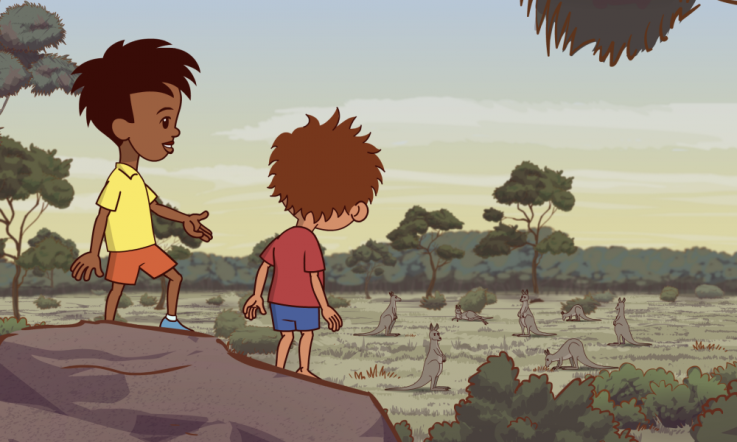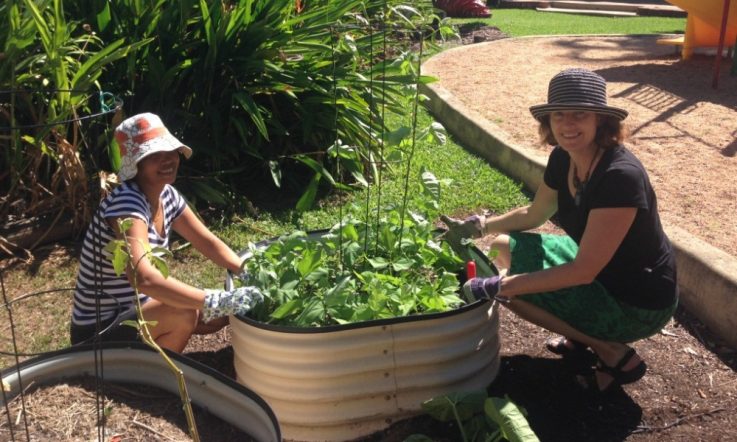When Little J & Big Cuz is broadcast on NITV in late April, educators will have access to a range of innovative educational resources to complement the viewing of the groundbreaking children's television series.
The series, which follows two Aboriginal children who explore the world through the gaps in the back fence, seeks to provide Indigenous children with a window into the world of school, while supporting the successful transition from home to school for these children and their families.
The series was borne out of a partnership between the Australian Council for Education Research (ACER) and Ned Lander Media, NITV, Screen Australia, Film Victoria, Screen Tasmania and the Australian Children's Television Foundation.
ACER worked with education consultants Priscilla Reid-Loynes and Deborah Cohen to develop the educator resources to support the series for students in preschool and junior primary school.
The materials, which will be available to download for free, complement the themes and stories of each episode. The resources cover the Indigenous knowledge, understandings and skills explored throughout the series, as well as the relevant curriculum areas. In addition, the resources suggest questions and activities that can be attempted following the viewing of each episode, and provide links to other relevant online resources.
Importantly, the resources have a foundation in the Early Years Learning Framework and the Australian National Curriculum.
Reid-Loynes, who is responsible for preparing the pre-primary resources, says that while they were developed specifically with Indigenous children in mind, they are tools that can be used with all children.
‘We developed it specifically with Indigenous children in mind … but all the experiences are actually open for all children to engage with. It's for all children but it's also for educators, because what my own work tells me is that educators, are unsure of what to do.
‘It's about supporting the child but also supporting teachers and schools to be confident delivering Aboriginal perspectives within the classroom and also asking educators to look at Aboriginal pedagogies and how they can use that within the classroom.'
Reid-Loynes says the resources are based on Aboriginal pedagogies including a focus on storytelling.
‘When we look at TV – that's storytelling and our people have told stories for thousands of years. So it's storytelling through another medium, through television,' she says.
Cohen, who was responsible for preparing the Foundation (Prep) to Year 2 resources, agrees that the resources can be used by all educators.
‘Even though we are very cognisant of the ways Aboriginal students and Torres Strait Islander students learn and we have taken them into consideration and we have embedded them within the learning processes, it is still about students being able to demonstrate explicitly what the content description in a learning area requires,' she shares.
‘For example, if we're doing geography, then there are particular skills around mapping, understanding the terminology like direction, scale – things like that…
‘So what we do is use illustrations from Aboriginal and/or Torres Strait Islander practices and cultures and use those as the guiding content for the students to learn the specific skills within the learning areas.'
Cohen says she has explicitly worked to ‘align Indigenous knowledge, cultures, and skills, and processes of working in every one of the activities so that they are complementary and they are not seen as being an oddity, or just a one-off'.
The resources for F-2 are based specifically around the 5E inquiry process (Engage, Explore, Explain, Elaborate and Evaluate) and every module has 30 different learning activities.
Teachers can use the website's search function to either take all of the modules, or target a specific year level, inquiry stage or theme. The resources are not a specific program of work, but rather something that can be adapted for the context of each individual school.
‘There are different ways they can search and different combinations of content that they'll be able to download and use,' Cohen adds.
Additionally, all the resources are aimed to assess the ICT capabilities of each student. ‘There is an expectation that students will be able to search online using iPads or some type of internet connection in order to retrieve or to use information along the way,' Cohen explains.
‘This particular resource, I don't think it's been done before in the manner that we have tried to do it here and that is use it in a very contemporary way – integrating all the content we can find to support the learning activity with Aboriginal and Torres Strait Islander content and non-Indigenous content as well.'
Reid-Loynes, who has been involved with the development of the series since the very beginning, says she's really excited for children to finally be able to view the series for themselves.
‘I think to be able to see yourself in a television program that not only reaffirms the knowledge around your cultural identity but then it's also sharing, “okay when you go to school this is what some classrooms might look like”– I think that's a really powerful tool,' she says.
‘I hope it breaks down barriers for our children accessing school but also for schools in building relationships with our community and getting to know and understand the knowledge and strength that our children come with from home.
‘I hope it breaks down those barriers more and that people won't be scared to have a go implementing Aboriginal perspectives, because I think it will only enrich their programs.'
Little J & Big Cuz will go to air on NITV on 28 April 2017.
Visit the official Little J & Big Cuz website and sign up to receive an update straight to your inbox once the resources become available.



